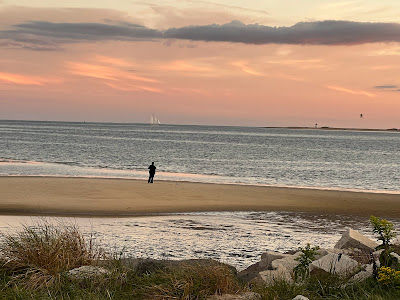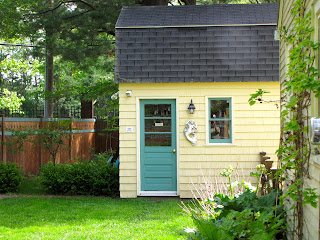Neither of us remembers how we made the decision to take a road trip. Most likely we were complaining about winter temperatures and slippery snow in our tiny coastal community of Provincetown, Massachusetts, a peninsula at the very tip of Cape Cod. Probably we were motivated by promising two friends we’d come visit. And certainly we thought about if not now, when? So we mapped out thirty stops: no snow. Warmer weather. Friends and family. Dog Parks. American cities and small towns. Meeting strangers. Leaving vacuum cleaners and chores behind. Just Thelma, Louise, and Mattie, on the road.
Where to start? Northern Florida serves as our starting point. It’s 1,464 miles, 22 hours driving time to St. Petersburg from Provincetown. We look at a map of the East Coast and we look at each other. Janet and I don’t do well in the car. It’s a hot spot for us. We argue about directions and I complain about her tailgating, which she denies. We also stiffen if we sit too long. So first off, we decide to limit our driving to 4 or 5 or at most 6 hours a day.
We have to see our daughter and son-in-law and our grandkids, two hours away in Natick before we leave. From there we’ll drive to Western Massachusetts, to Greenfield, to stay with friends for a few days. We’ll catch up with them and several other local friends before we leave for a night in Philadelphia. And then on to Charleston South Carolina. But wait, we’re already breaking our proposed four or five or six hour driving limit, The ride from Philly to Charleston is ten-plus hours. So I look for a midpoint: according to Google, I’m not the first traveler seeking that midpoint—the question has been asked hundreds, maybe thousands of times. The definite winner is Rocky Mount North Carolina. Okay, that works. I book a pet-friendly hotel in Rocky Mount for a quick overnight and we’ll drive two hours the next morning to Charleston. We know very little about Charleston except for its reputation for Southern hospitality and Southern grits. (Fast forward: We didn’t know then about the plantations and the international slave trade based in Charleston from 1856 to 1863. That’s a heartbreak.)
From there planning the trip gets increasingly interesting. Thanks to Janet’s fill-in part-time job at one of Provincetown’s hotels, the manager who is also a friend has gifted us with four certificates for free stays at sister hotels, each one for two nights. Tybee Island GA. San Antonio and Austin Texas. And Memphis Tennessee. Tybee Island is barely fifteen miles from Savannah. We’ll plan on being there three days. The place is dog friendly and right on the beach. Next, we’ll head four hours to Flagger Island, Florida. Mattie has a dog friend there, a black lab named Mary Jane. Mary Jane’s owner tells us Flagger is a quaint coastal town like Provincetown, and we’ll run the dogs on the beach. Then St. Petersburg. New Orleans. San Antonio, Austin. Marfa Texas. Bisbee Arizona. Tucson. Phoenix. Mexico. and three stops in California: Palm Springs, Pismo Beach, and Topanga.
I decide to write and revise all these stops on an 8 by 11 inch envelope. As we keep planning, I add the miles and driving time from one stop to the next and high and low temperatures. For each stop I add the miles and hours to the next stop, the average temperatures, and the dates we’ll be there. (Fast Forward: that envelope worked like a charm, even when we changed plans.)

Where to stay? Neither of us are hotel chain types. We prefer quaint quirky places. But we’ve never used Airbnb and we have Mattie. As I begin googling, some things become clear: in most cases, we can find places to stay for around a hundred dollars a night. (Fast forward: not exactly.) I choose places that have the greatest number of positive reviews, and I look for those that include a free breakfast, not so much to save money, but so we can eat quickly and hit the road faster. The chains jump out. I choose mostly 3-star ratings, but I let a couple of 2-stars slip in because they look and sound just fine. (Fast forward: In several cases, I’d come to regret those slips.) I spend about ten hours (it might have been twenty. Or thirty.) booking our stays. I make copies of each confirmation and slide them into a plastic sleeve folder.
What to pack? Eight weeks on the road. With a dog. And a separate trip to Mexico. That feels like a lot of packing:
Snacks for the car. Single bags of popcorn, Kind bars, peanut butter crackers, chocolate, oranges, pistachio nuts, breath mints. Bully sticks and other treats for Mattie. We’ll be gone almost eighty days and we’ll happily eat our meals out. But we could easily drop ten dollars a pop on quick road side stops, and maybe we wouldn’t want to take the time to stop as often as we want to munch. Plus we don’t know how leaving Mattie in the car alone in strange places will work out. Our solution is to shop at BJ’s and buy plenty of munchies. I pack a good supply in see-through plastic bag that we’ll keep up front in the car, and the rest goes in a grocery box, stuffed in a corner of the car’s way-back.
Weather appropriate clothes? Figuring this part out is challenging and I feel like a genius when I come up with a plan.. The Rav has a good sized trunk area and should hold our suitcases and supplies well enough, But who wants to lug suitcases and dog supplies in and out of hotels night after night? I’m a light packer (so I thought) and Janet is not (no surprise there!) We’ll start off in cold East Coast weather and warm up in the Southern states and along the Southern border. But none of the temps are exactly sun-bathing weather, except for when we fly to Mexico. Mexico will definitely be pool ware, so we decide we’ll each pack a suitcase specifically for there and we’ll put them the furthest back in the car. We won’t have to touch those two suitcases for weeks.
For our day-to-day travels, I come up with this idea to pack each outfit separately—for example, a top, a bottom, and underwear-in a see-through plastic bag, I figure we’ll separate the plastic bags by cold weather or hot weather. So over a few days, an hour or so at a time, Janet and I pull out the clothes we want: summer, winter, sweaters, blouses, tee-shirts, pants, shorts, socks, underwear, pajamas. We sort and match them in some almost random order. Some plastic bags have long pants and long sleeves and others have capris and tee-shirts. We decide to each make a separate bag for beachwear: a bathing suit, a cover, slip flops. All in all, we end up with close to thirty see through bags. Each day, when we check into our hotel or where ever, we’ll simply pull out one bag each, along with one shared suitcase that has our nightwear and toiletries and medicine and Mattie’s blanket and food and munchies. It seems pretty efficient.
We pack the plastic bags in grocery boxes, upright for easy identification, one box for warm weather clothes, and a second box for cold weather. We quickly realize we have four pretty good sized boxes that take up room more room than expected.They compete for space along with our three suitcases. I fail to factor in Janet’s ginormous toiletry bag—it’s the size of an adult raccoon. It’s all a tight fit but it’s workable. We put the plastic bags right in front and easy to reach; the Mexico suitcases go way in the back; Mattie’s supplies and food fits on the left side, snack replenishments fit on the right side, and my laptop and Mattie’s foldable soft crate are tucked behind the passenger seat. We make a make-shift shelf for Mattie’s food and water behind the driver’s seat. She has herself a little apartment back there: a small soft bed, a window to view the world, her food and water, and a squeaky toy and bully stick.
By the time we leave Provincetown the car is pretty darn pretty organized. (Fast forward: Ha!)




































